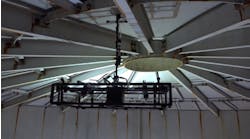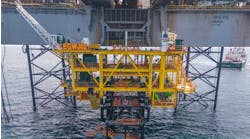EQUIPMENT & ENGINEERING: Planning system coordinates installation, hookup, startup
A planning system that coordinates the hundreds of tasks involved with install- ation, hookup, and commissioning/ startup of new platforms or upgrades of existing platforms has been designed by EDG Inc. According to the developers, the system "increases hookup crew efficiency, accelerates first oil, reduces shut-in time, enhances safety performance, and reduces overall project costs." The system is known as Work Pax.
EDG launched the planning system on an upgrade of BP's Pompano platform in the Gulf of Mexico. The Pompano platform was upgraded for the Exxon-Mobil Mica subsea tieback and platform de-bottlenecking upgrades. With 160 workers scheduled to be offshore for more than 100 days during construction and a 30-day complete shut-in, integrating the Exxon Mica and BP Pompano de-bottlenecking schedules required extensive planning.
The system, according to EDG, identified steps, planned in detail, sequenced, and optimized all tasks, as well as the personnel required to complete each task. The goal was to get the facilities to an operational state as quickly as possible. The program currently is in use on BP's TLP "Marlin" King Field development.
The system divides all offshore tasks into major task groups: structural, mechanical, instrumentation and electrical, commissioning and start-up. The tasks for each group are assembled into books called "Work Pax." Each book contains all material relevant to each task, including required drawings, lists of materials and equipment, required personnel, estimated man-hours to complete each task, job safety analysis for each task, required work permits, and detailed installation procedures. All of the tasks are rolled up into an integrated, resource-loaded, critical path project schedule that shows when each task is scheduled for execution.
Safety gets attention prior and during construction. Hazards are identified in advance and counter-measures developed to reduce risks. As a result, changes in procedures can be made in advance of actual construction activities to avoid potentially dangerous situations.
Another benefit of such planning is that a new manager, project engineer, or construction superintendent can examine a work document at any time to determine the status of the project and review next steps. Changes in personnel no longer create significant problems. The project moves forward on schedule until the platform is ready to return to service.


